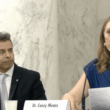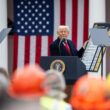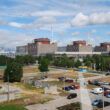R. Scott Kemp, assistant professor of nuclear science and engineering at MIT and former science advisor to the State Department’s Special Advisor for Nonproliferation and Arms Control
April 2, 2015
The framework agreement is a remarkable achievement. It has greater specificity on technical parameters, timelines, and sequencing than I imagined would have been possible. The terms spell out a fair and equitable deal for all parties. It will allow Iran's peaceful nuclear program to grow at a natural pace, while at the same time providing a solid 15-year window during which the United States can build a stronger relationship with Iran to reduce Iran's incentives for nuclear weapons. The negotiators are to be congratulated!
There are, however, important outstanding elements that must be resolved in the coming months. A breakout time of three months is technically possible under the current text of the deal. This arises because of a lack of specificity about the non-uranium enrichment capabilities allowed at Fordow. This notionally non-uranium capability, unless specifically designed otherwise, can be rapidly repurposed for enriching uranium under a breakout scenario. Between now and June, negotiators will have the difficult task of finding a technical way to ensure that centrifuges installed at Fordow for non-uranium purposes are also physically incapable of uranium enrichment.
Update (April 4): I have learned on good authority that the first bullet point of the framework deal listed under the heading "Enrichment" is intended as a blanket provision that applies to all centrifuges at all sites, whether used for uranium enrichment or stable-isotope separation. It states, "Iran will go from having about 19,000 installed today to 6,104 installed under the deal, with only 5,060 of these enriching uranium for 10 years. All 6,104 centrifuges will be IR-1s, Iran's first-generation centrifuge."
Under this broader interpretation, Fordow would be restricted to IR-1 centrifuges for stable-isotope separation, and even if subsequently repurposed for uranium enrichment, a breakout of about one year would be maintained. The concern previously raised is thus resolved provided Iran is in agreement with this interpretation.
Other oustanding questions do not enter the breakout calculation, but are nonetheless important and will take considerable effort. For example, the extent of research allowed could be more carefully sepecified: will research on laser enrichment or other isotope separation and isotope breeding techniques be allowed at sites other than Fordow? Also, the mechanism by which Iran will maintain its low-enriched uranium inventory below 300 kilograms needs to be specified. The parameters for the redesign of the Arak reactor are already well in hand, but arrangements for exporting spent fuel will be difficult to negotiate. Principles for the long-term enrichment plan beyond 15 years need to be resolved.
Many of these outanding areas are also issues for other emerging nuclear-power countries. The excellent work of the negotiating teams lays the groundwork not only for a peaceful resolution of the Iran nuclear issue, but can also help address the connection between nuclear power and nuclear proliferation more generally. If it takes up the charge, Iran can become a leader in securing a world free of nuclear weapons, helping to find ways for others to share in the fruits of nuclear energy.
R. Scott Kemp
assistant professor of nuclear science and engineering at MIT
former science advisor to the State Department's Special Advisor for Nonproliferation and Arms Control













